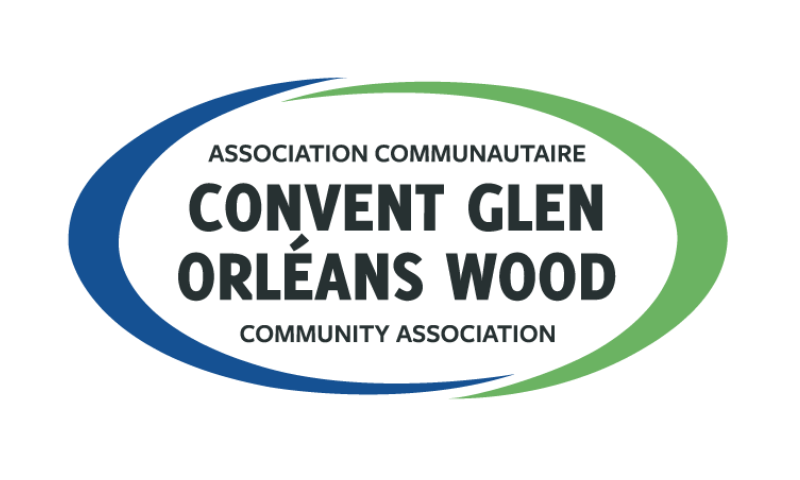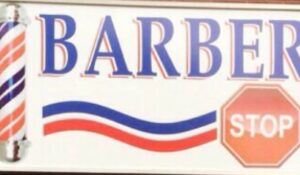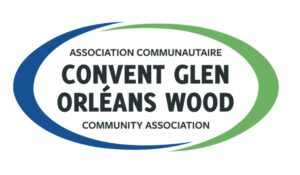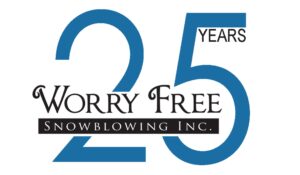I’ve officially been a sitting board member of the Convent Glen Orleans Wood Community Association for 6 months now. I’ve also lived in the community for 5+ years and have family with deep roots here. As I was sitting down to put together the April edition of the newsletter, I thought to myself: “What have I learned about this community and the people in it that I can share to commemorate half a year into this whole thing?”

After thinking about it for a bit, I came up with 5 things I’ve learned about our neighbourhood. I should note that in the last couple of years, even before I joined the CA, I have been doing a lot of research, reading books, and learning a lot about urban design principles, along with municipal zoning and finances. I am by no means an expert, but it has been so interesting, and I have learned a ton.
At some point, I’d like to write something longer about each of these, but for now I’ll try to keep it relatively short. I’d love it if you’d join our Community Forum (hosted on the chat platform Discord) and give your two cents.
1. Low density neighbourhoods with mostly or only single-family housing are dramatically under-taxed
Usually, when you hear someone talk about property taxes, they are complaining about rates being too high and annual increases being too large. I think it would really help our city’s finances if more people had the opposite perspective. Property taxes for suburbs and urban single-family homes are exceptionally low for the amount of space used in these communities, and I think the city as a whole would massively benefit by taxing these properties proportionally to housing density.
Personally, I fall under the ‘Want Stable Services’ and ‘Want Low Taxes’ (who actually *wants* high taxes), and so for my own personal view ‘More Density’ is the answer.

2. Our city budgets don’t balance because car-dependent urban sprawl is really expensive
Part of the cause of #1 is that sprawled out, sparse (low density) development sort of necessarily requires mass transportation infrastructure. This is because at these housing densities, it’s nearly impossible to put lots of common services and amenities close enough to where people live that they can realistically walk there. Ottawa (and most North American cities) decided decades ago that the main mass transportation infrastructure we were going to focus on was personal cars, trucks, and more recently, SUVs.
This is pretty much the most expensive and space-taking way to build a transportation network, because cars are massive (at human scale), and the infrastructure required to make car trips flexible and remotely time-efficient has required absolutely everything else to get completely out of the way. Cars are a superpower in very specific situations, but more cars and more space for cars is not going to solve problems with our transportation network, it is going to make them worse.
3. Almost all of our car infrastructure is extremely over-built, while almost all of our other transportation infrastructure is dramatically under-built
I wasn’t around in the 80s, when the suburb of Convent Glen was built, but you can tell that the builders thought two main things about outdoor space. They clearly saw that green space was important, but it’s just as clear that they were expecting people to drive literally everywhere they actually wanted to go (and that everything you’d want to get to would only be reachable in a car).
When Jeanne d’Arc Boulevard was built, as a 4-lane road, it was designed to accommodate future increases in car traffic decades from then. This is despite the fact that the community cannot possibly grow larger, being surrounded in the north by the greenbelt, the river, and highway 174. The (necessary) gradual growth in the size and density of our community (see #1) cannot comfortably make any more room for cars (streets or parking), and so the transportation network must adapt to include more accommodations for other modes of transportation (see #4 and #5).
4. Small change can make a big impact on transportation choices, and your emails to the city matter
Over the last two years, I have been bugging the city persistently on winter maintenance for the path network that exists inside the Voyageur and Vineyard loops to better accommodate winter transportation that isn’t car dependent. This past winter, city crews fully rose to meet the challenge I had laid out for them, keeping on top of this maintenance on the main routes I was suggesting through every snowfall. I do continue to make the case that more of the network needs to be renewed to a modern paving standard (one capable of bearing the weight and blade of a mini-plow) so that the entire path network can be fully maintained through the winter, but it was a great start.
Maintaining our non-road transportation infrastructure in the winter is just as important for accessibility as maintaining our roads themselves. In heavy enough snow, both become impassable and potentially dangerous until they are cleared by plow. By making it 10% easier for kids to walk or ride a scooter or bike to school, real actual people are going to choose to make the walk rather than getting in their cars, and making it 10% harder to move around the community outside a car (say, by not clearing 5-10 cm of snow from the path network), we are prompting more people to make the choice to drive even short distances. These everyday choices matter, and small changes to the built environment do affect choices.
As someone who has walked their kids to school every single day for the last 3 years, since they began school, I see these choices play out daily.
5. Our shared sense of community spirit is basically non-existent, and in our neighbourhoods, community places are distributed very unevenly
I live in Convent Glen, north of the 174. Looking at a map, it’s extremely clear this place is basically completely devoid of any accessible, indoor public space at all. We have schools, and a minuscule amount of retail space that hasn’t grown or changed much in decades, save for a derelict gas station that is now (thankfully) a Habitat for Humanity development.
This lack of shared and accessible *indoor* public spaces within easy walking distance means anywhere we go, we are more likely to see random people (strangers) who live further from us than our own neighbours. If we never or rarely get the chance to spend time with our neighbours without going out of our way to arrange it, it will be very difficult to come to a shared understanding of what we want and need as a community.
By the way, anything that requires crossing the highway is a non-starter in this argument. The shortest walk from a dwelling (that same Habitat for Humanity development) to another amenity across the highway is 700m or a 10-minute walk according to Google Maps. Any other dwellings are at least another 100 metres further walk, and that just gets you to the nearest entrance of the Bob Macquarrie Rec Centre.

What Next?
Do I have easy solutions for all these issues I’ve identified (some of which you may even recognize or agree with!)? Nope. We’ve built some of these decisions into our neighbourhoods in literal stone. In other cases, the decisions that have led to these outcomes are the product of human choices, and in many cases those choices are going to take some foundational shifts to change. Change is difficult, especially when it can be hard to see symptoms of the problem unless you know where to look. But I do think acknowledging a need for change is a good first step, and committing to actually changing this is an even more crucial second step.
The board of the Community Association can’t address these issues alone, there are only 8 of us. The more people in the community who understand the ways in which our built infrastructure is failing us, the more we can do together to address it. The final point here, #5, is probably the most important, because without a solid shared understanding of what can be improved and why, there’s almost no hope of anything else being accomplished. We will need to organize and work together to create more places in our community, and it won’t be easy.
We have lots of ways to get involved in our work and make this a reality. Please check out the Community Association Starter Kit to see where you can pitch in and breathe some much-needed wind into the sails of our community.














5 comments
2 pings
Skip to comment form
Nicely written, Rob! I think actions are the start of all positive changes so would be great to see how we can all work towards more harmonious connections within our neighbourhoods. I would also welcome positive stories from the many folks who also love their neighbourhood, maybe we can share and amplify the great things that are already happening.
Hello Rob,
As a former Director of the Convent Glen Orléans Woods Community Association I tend to agree with your thoughts on community participation related to issues that matter most to individuals and families who live within the boundary of Convent Glen and Orléans Woods. However, I am taken aback at the mere mention that our taxes are too low. The implication of such a thought could lead our politicians to think that members of our community ought to have their taxes raised. God forbid! You skirt around this issue by saying that this matter can be resolved by building high density communities and as a consequence maintain a regimen of lower taxes. This may be so, but experience has shown that high density communities, such as high rise apartment blocks without proper facilities, for example. spacious parks, close and readily available shopping facilities, schools, proper parking spaces, greenery, etc. engender other issues such as isolation, crime, frustration and an environment that is not well suited for human growth and development., etc. Needless to say I am against high density structures. There is so much land in this wonderful country Canada that steps should be taken by members of our city council to enact municipal laws that allow for spacious use of land so that human beings can live an open an free life rather than be stacked like sardines, one on top of the other in high rise apartments. On the other hand I am ready to compromise and accept the idea of medium rise apartments, say 3 to 4 stories high but squarely against high rises that we see in downtown Ottawa that are beyond human scale and dwarf the individual in a sea of concrete devoid of sunlight.
Author
Hey Claude, thanks for your response! It’s always great to hear from former CA members. I just wanted to clarify that I am absolutely not advocating for high-rises or ‘high’ density in communities, just more density (3-4 stories sounds like a very reasonable proposition) at a human scale. I also think that there should be more flexibility to include low-impact retail and services businesses (ground floor retail space in mixed-use apartments, for example) in plans like this.
My point about taxes was that per land area, our communities bring in very little tax revenue compared to more dense areas in the city, and it’s not because of high-rises in those places. Our single-family-home communities don’t bring in enough tax revenue to cover ongoing infrastructure expenses, and city budgets get tighter and tighter as a result (not just CGOW, but many suburban communities). We can (of course) let city services continue to languish and spend the bare minimum to cover it. But we can also raise more taxes through making it easier to integrate businesses and denser housing options into our very sparsely laid out communities. This also gives residents more to do here in our neighbourhood, making residents less reliant on cars and therefore less reliant on parking, which is one of the biggest drains on city finances when projects like shopping centres on Innes Road with vast parking lots are built.
I would love to continue this conversation as I think it’s a really important one. I know that people are used to a cozy and comfortable lifestyle in the suburbs where nothing ever changes. However, the existential risk to low-density, car dependent communities like ours is real, and city finances are not going to recover until we address this elephant in the room and set up our neighbourhoods to be more financially resilient and cover its own costs.
I’m going to follow this up via email because as I said I think the sooner we talk about this and help residents to understand *why* property taxes keep going up (though are still artificially low compared to a rate that would properly fund things like transit and other services), the sooner we can attempt to address the issue and help bring the city’s balance sheet back to a stable place.
Hi Rob,
Although I agree with some of your ideas, such as low impact retail services, low rise apartments, etc. I am always taken aback when I hear from politicians and read articles from pundits that we ought to raise taxes to meet the demands of viable communities like Ottawa and in particular Orléans and Convent Glen. Do not forget that property owners not only pay city taxes, but also school taxes, water taxes, land transfer taxes, Goods and Services taxes, provincial taxes and Federal taxes. I probably forgot other taxes, most likely hidden. This leaves the property owner with about 50 cents on the dollar, if not less to live on. So, to put it simply, 50% or more of our dollar feeds all levels of governments. Let us also not forget that we live in Ottawa, the capital of Canada. Do you not think that part of these taxes that are sent to support our federal and provincial governments ought to be re-channeled towards city funds ? This infusion of money would lessen the load on property owners and improve the liveability and aesthetics of Ottawa. Both federal and provincial governments have been major culprits in denying Ottawa any additional funds. And, to receive any of this additional funding is, as a general rule, a major struggle on the part of the city. Mayor Mark Sutcliffe I am sure can vouch for that. The only way you will attract entrepreneurs who can provide low impact retail services or other types of services is through lower taxes, and low interest development funds. Otherwise you are a dreamer of wonderful ideas without the means to realize them. So, on a positive note, low taxes, low interest development funds plus some provincial and federal financial support will encourage growth and by extension increase city revenues without relying excessively on property owners to support all of the services Ottawa needs and provides. Let us get this burden off our backs!
Author
Thanks for continuing the discussion, I can tell that we see taxes pretty differently. I think you’re absolutely right that there are more taxes being assessed than most people think about unless they look closely at bills and their budgets. However, I would contest that a calculation of over 50% is probably pretty hard to get to, and this money is not being ‘lost’, just being spent in a pool as opposed to by individuals. What we’re really talking about is which things should be taxed or subsidized more or less.
In my piece, the argument I made was simply that *if* housing density and zoning restrictions in suburban neighbourhoods are going to remain exactly the same, a higher tax rate on those properties will *need* to be implemented. This will actually balance the city budget and provide all the services that are currently starkly underfunded. However, what I am actually suggesting instead is that at the *neighbourhood* level we need a way to increase property tax revenue, by allowing more housing at a higher density, and mixed-use zoning, both of which will increase the tax base without any individual property or business owner to pay any more than they are.
People in that situation who would rather keep their spacious backyards and McMansions are certainly well within their rights to do so, but in the interest of fairness, taxes on those properties would increase at a faster rate than denser or mixed-use properties, because it costs the city correspondingly more to service those properties. Over time, this would naturally and gradually lead to denser neighbourhoods, with any individual property owners having the choice to change their lifestyle if they cannot afford their proportion of the actual cost of what is currently subsidized by denser neighbourhoods.
These people may wish to move to a more rural community which naturally has less property tax for a given lot size, because there are correspondingly fewer services offered to residents in those communities (sewer lines, paved roads, water distribution systems, etc.). This seems extreme, I admit, but if the city cannot pay for infrastructure renewal as communities age, cutting services we take for granted in the suburbs could easily become a reality.
[…] choose to read it and hopefully take something away from it. I’ve just finished writing about what I’ve learned about the community in my 6 months involved in the community association here. On the heels of that, it feels important to introduce myself and give you all a glimpse into […]
[…] My 6-Month Review of our Community […]